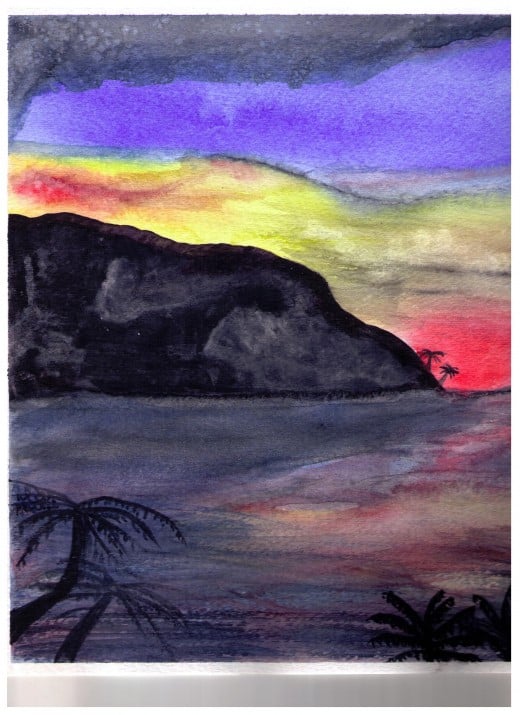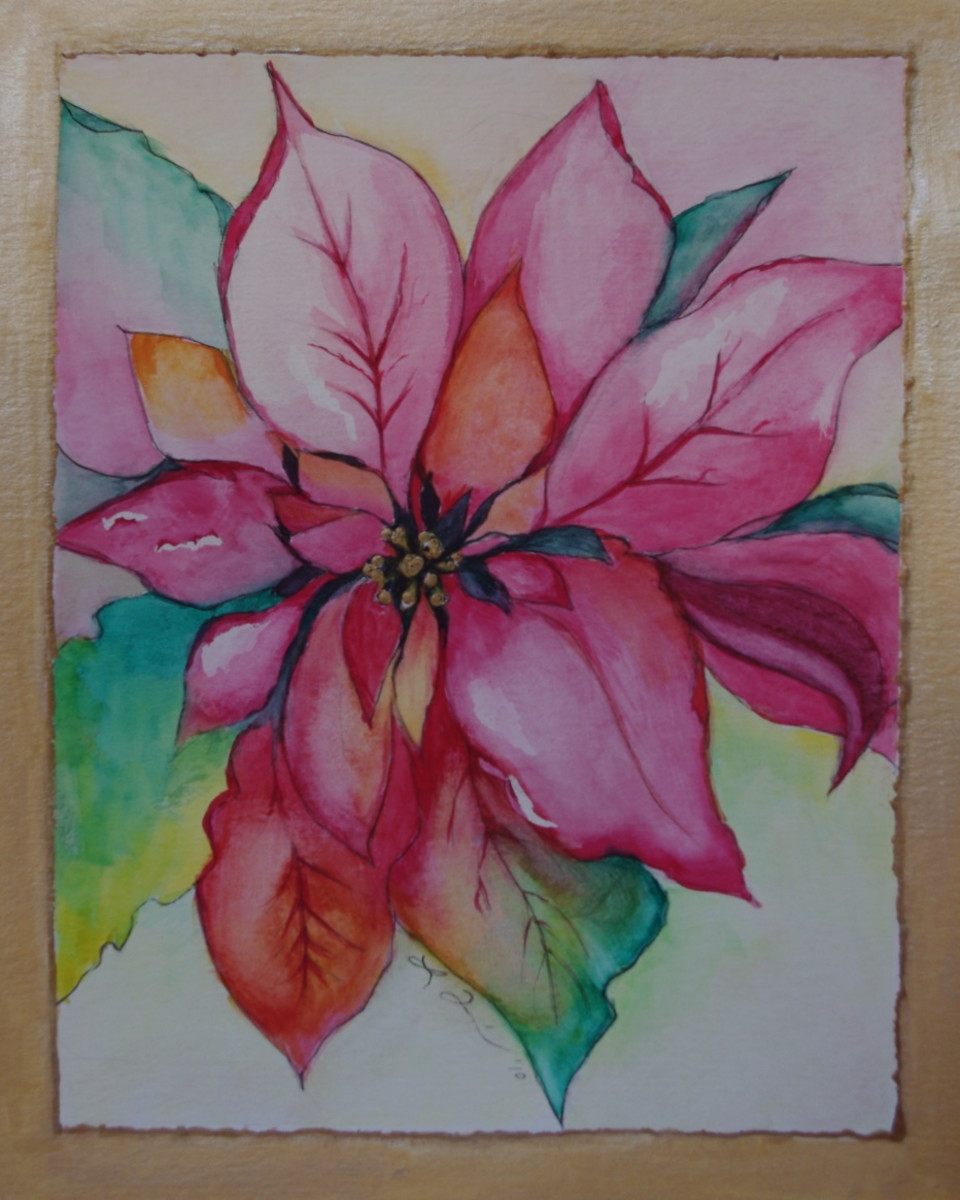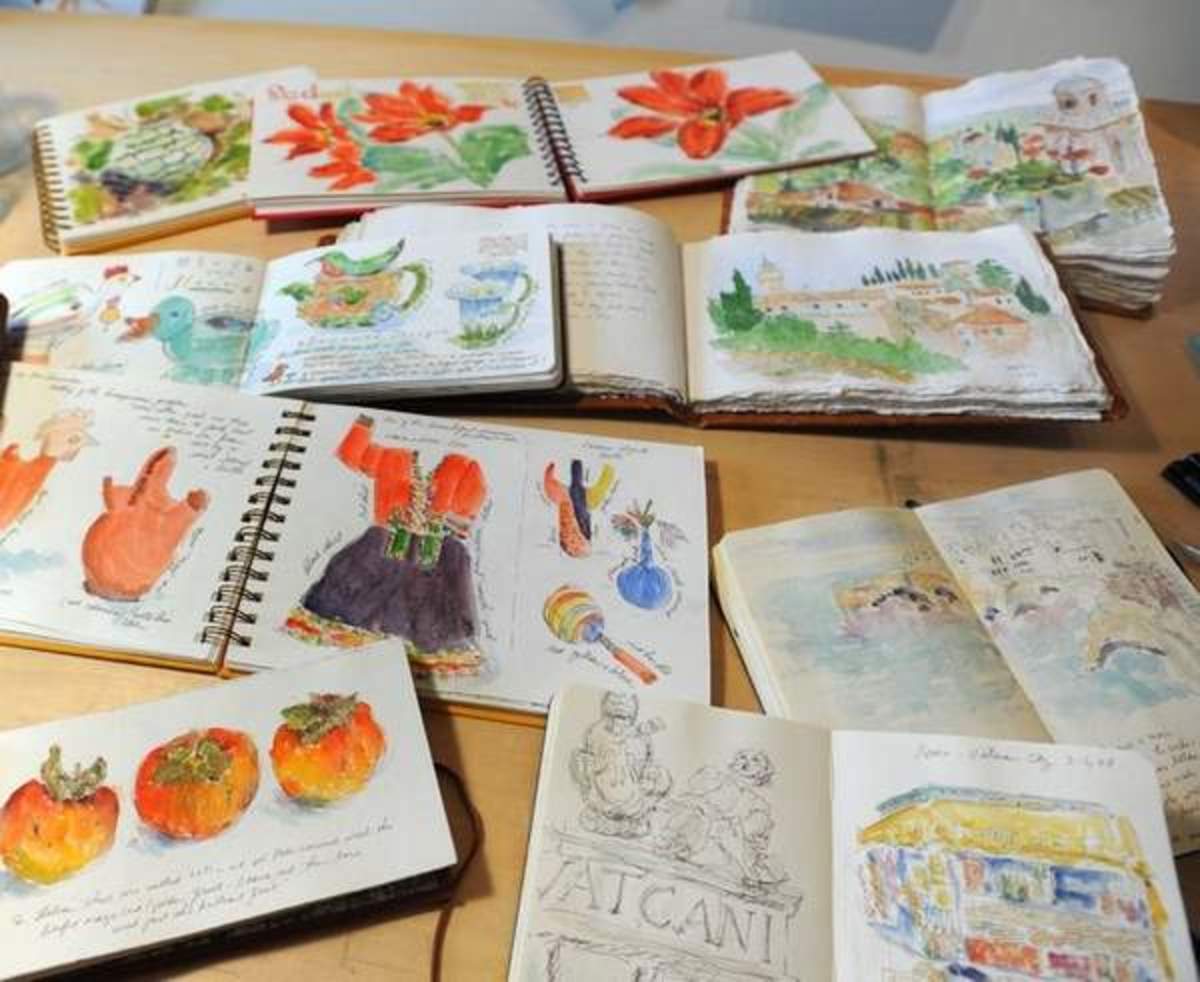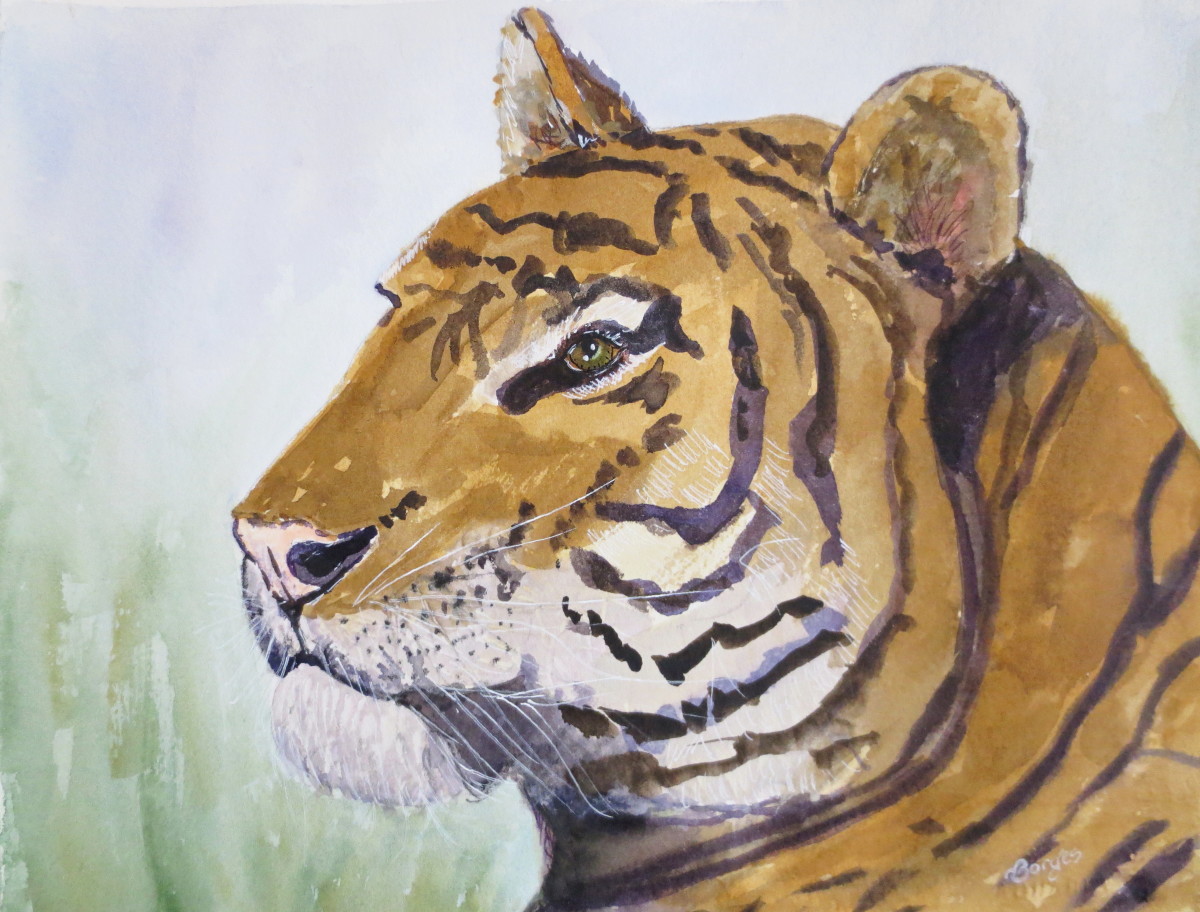Basic Watercolor Techniques: What You Need to Know to Get Started
Nations are destroyed or flourish in proportion as their poetry, painting, and music are destroyed or flourish. ~William Blake
Many people have lots of misconceptions about their artistic abilities-- they think that if they weren't little drawing geniuses as children, or don't have much interest in most art, that discludes them from being able to enjoy creating it themselves. But many find painting to be a relaxing, enjoyable way to create beauty and give their imaginations a way to exercise. Techniques can be learned, and though most of us won't ever be Renoirs or Van Goghs, that shouldn't discourage anyone from trying. Even the greatest masters had a first try at putting brush to paper, and look where it took them.
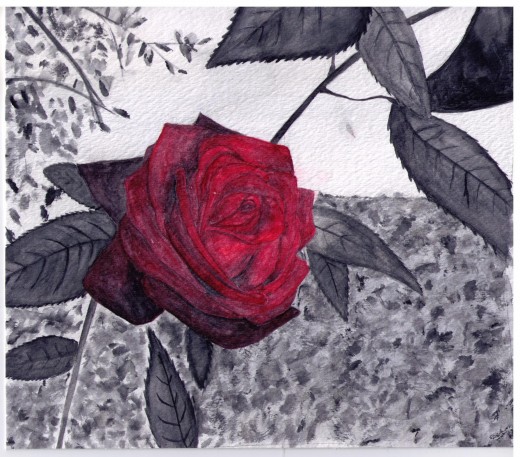
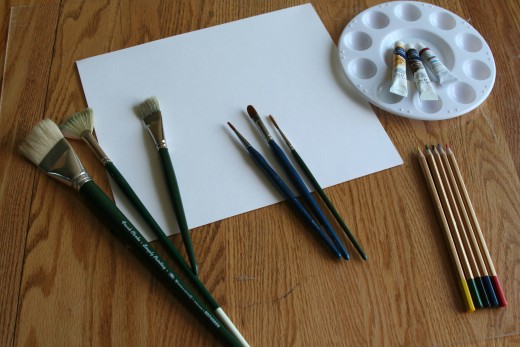
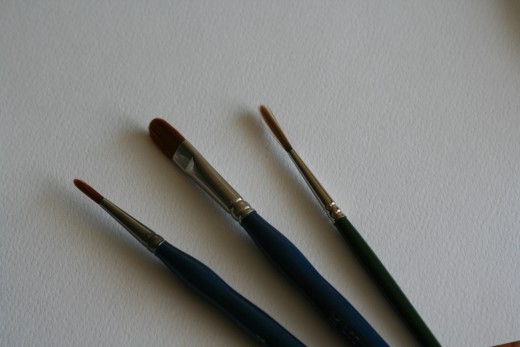
Necessary Tools
Here is a list of the things that you absolutely need to get started. There's not too much, and with coupons you can get everything very economically at crafting goods stores.
- Watercolor Paper: I use cold press 140 lbs. You really don't want to go very cheap with this investment, as paper that's a poor quality will disintegrate as you work with it.
- Brushes: All you need is three or four brushes of a decent quality (i.e. the hairs don't fall out if you run your finger across it). One fine point, one medium, and one large (see picture) as well as an extra large one for washes should be sufficient, at least to get started.
- Paints: I use
Cotman's Water Colours and have always been very happy with them. They seem to be a good quality of paint without being very expensive. If you choose not to purchase a set, you can learn how to mix your colors so you don't have to buy very many. Make sure to get a good generic red, blue, and yellow that are the purest forms you can find of the color. Also, I found it very difficult to mix a green that I was happy with, so find one you like in that, brown and black. White can also be helpful sometimes.
That's just about it, beyond a glass of water and a hard surface to paint on. When I first started I found it helpful to have a sheet of plexi-glass to tape the paper down to, but that's only needed if you find it helpful.
Winter Day
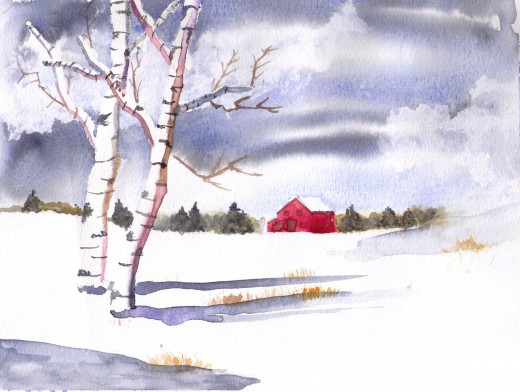
Getting Started
Here are a few basic things you should know about getting started that will make your learning experience much smoother.
Image Transferring
If you don't have the inclination to free-hand a drawing on your paper for a basic outline, there are other simple ways to get it done. Anchor your paper with masking tape on a stable surface, and lay a piece of graphite paper, graph side down, on it. Next, place the picture you wish to use, and then a piece of waxed paper on your picture to save it from unnecessary marking. Simply take a pencil with a strong tip and trace the outline of your picture, and voila! you are ready to start painting! The original picture can also be used as a point of reference for coloring in the painting.
Stretching the Paper
This is an optional step-- I didn't even hear of it until I'd been painting for a few years. All it involves is taping your paper down (I like using masking tape that isn't terribly sticky), wetting your paper completely, and then letting it dry before starting the painting. This results in less warping of the paper in the finished product, but the fact that you're applying water to paper means that it won't lay completely flat once you're done. That's perfectly normal and acceptable.
Taping the Paper
This is kind of like stretching it, but you skip the wetting and drying step. Beyond holding your paper flatter, it will give it more stability as you work.
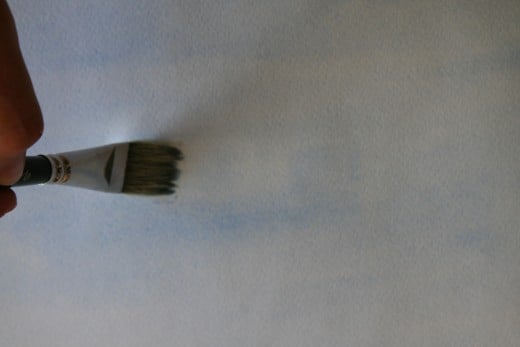
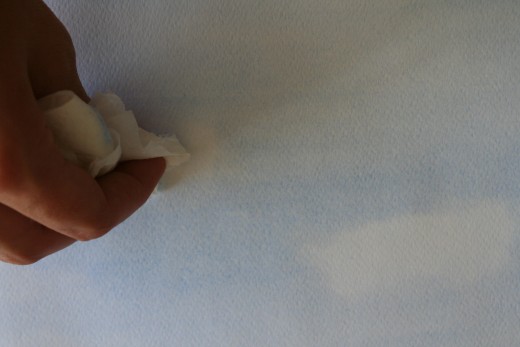
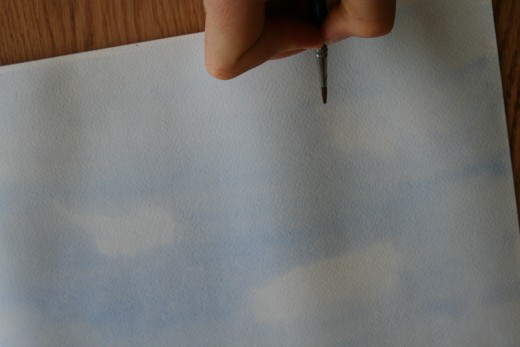
Other Techniques
Creating a Color Wash
This is an extremely efficient, useful way to get a lot of area covered fast in your painting. Simply apply a coat of water to your paper, and then paint. This can be a lot of fun, as the paint will create it's own look and design as it follows the water. However, you do have to wait for the paper to dry completely before using other colors, or they will blend in completely. If you don't have the time or inclination to wait, you can always get out the hair dryer and give it some hot, low pressure air.
Here are a few examples of how to use a wash:
- Creating a sky-- this one is extremely useful for landscapes. A blue or grey wash, a few dabs with a cloth of paper towel to create clouds, and you have a great, basic sky! A tiny bit of detailing around the clouds can make them really pop. Also, see the Hawaii painting for a more elaborate, colorful way to create a sky.
- A Single Color Background-- When doing this (as in the gray in the rose picture), you have to make sure that you aren't covering even the part that is supposed to be a different color, or you won't be able to get a clean differentiation.
Using Water
We are, after all, working with watercolors, so one of the most important things to learn is how to use water as effectively as possible. Here are a few things you should keep in mind:
- The more water you use, the more pale your colors will be.
- A tiny bit of water on your brush with lots of paint can be used to create an intense, concentrated color.
- Even after the paint has dried on the dish, applying just a drop or two of water makes it completely usable. This is also a good thing because there is no paint wasted this way!
Detailing
This is my favorite part. It makes the painting become what you have envisioned, and gives your creativity a huge playground.
- Start at the lowest layer of color. For instance, I filled in all the black and white foliage on the rose picture at the top before touching the rose. When I did get to the rose, I began with the outer dark petals to give it more dimension.
- If you have a picture you're copying, reference it but still take liberties and do what you want to coloring, shadowing, and lines. If it's all coming straight from you head so do whatever you want!
- For the little tiny details, try throwing in some colors that seem odd. Nothing garish, but a bit of green in the midst of browns can give life, or splash of white on the edge of a dark shadow can define it and make it stand out.
Most of all, have fun! Be creative and make something that you like, something that makes you want to do it again. Happy painting!
Hawaiian Sunset
